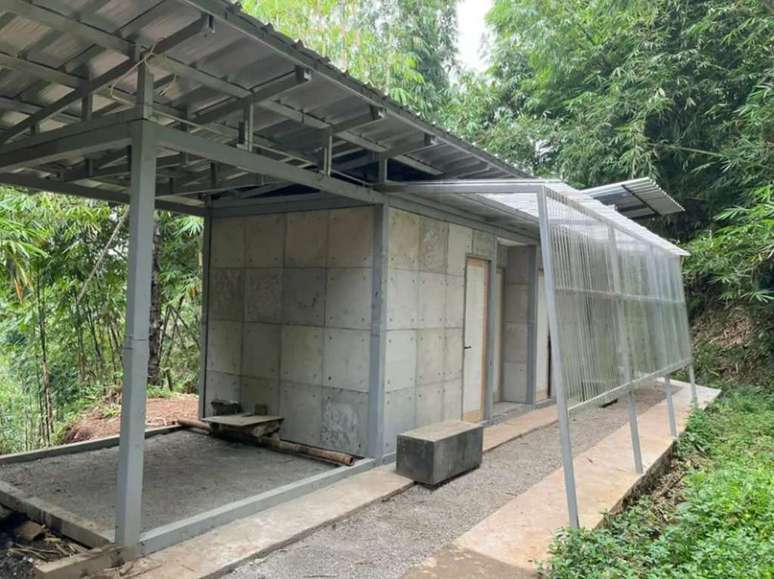Disposable diapers – after being washed and crushed – could replace 9 to 40% of the sand used in the production of cement used at home in Indonesia
Scientists from the University of Kitakyushu, in Japan, have tested a technique for solving two environmental problems at the same time: the final disposal of disposable nappies and the production of concrete for civil construction. Diapers, after being cleaned and crushed, could replace 9 to 40 percent of the sand used in cement.
- Engineers capture carbon dioxide in concrete in an unprecedented way
- Concrete made with tires is a sustainable alternative in civil construction
A growing form of non-recyclable waste, disposable diapers are a product that represents a large volume of waste destined for landfill or incineration with virtually no alternatives for recycling. At the same time, it uses the production of cement about 50 billion sand each year and its manufacturing process accounts for almost 7% of global greenhouse gas emissions. As the global population is expected to grow in the coming decades, more babies will wear diapers and more homes will be built to accommodate them.
Siswanti Zuraida, the civil engineer behind the project, came up with the idea while teaching in Indonesia. It was in this country that she and her fellow researchers built a model home with the concrete made from diapers to demonstrate its feasibility.
Turning diapers into houses
The diapers, like that of Zuraida’s baby, were collected, washed and dried and then crushed into small particles. Scientists mixed the material, in different proportions, with the concrete components, testing the limit of sand that could be replaced by diapers without damaging the mechanical properties of the final product.
The results showed that different percentages of diapers could be used depending on the purpose of the concrete. Material used in features like beams and columns might have 27 percent of its sand replaced by diapers in a one-story home. For a three-story house, that limit would drop to 10%. The highest replacement rate was achieved in the walls: 40% of the sand could be replaced. not anymore concrete of flooring, where more strength is needed, would be only 9%.
The experimental house was built following all the Indonesia building requirements. Despite being small, totaling 36 square meters, the residence used a volume of 1.7 cubic meters of diapers, equal to 1,700 litres. While it proves viable, the technique poses a logistical challenge to apply on a commercial scale: nappies would need to be sorted in the same way that, ideally, other recyclables have.
Source: Scientific reports Through: Nature
Trending on Canaltech:
- The petrol pump with anti-fraud system arrives in Brazil; see how it works
- 10 cool commands to use in ChatGPT
- Does China’s Giant Hydroelectric Dam Affect Earth’s Rotation?
- World’s largest solar telescope takes stunning new photos of the sun
- WHO stops recommending sweeteners for weight control diets
- The Juno probe approaches the moon Io and takes new photos
Source: Terra
Rose James is a Gossipify movie and series reviewer known for her in-depth analysis and unique perspective on the latest releases. With a background in film studies, she provides engaging and informative reviews, and keeps readers up to date with industry trends and emerging talents.








